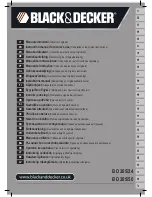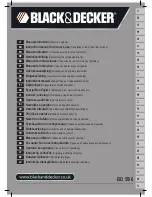
32
AGL_Stream_ST_A2L_A1_4M_6M_EN_Rev00
▪
suitable ventilation according to the room volume and to the refrigerant charge, especially for
systems with A2L refrigerants;
▪
visual check of the electrics, wiring, fuses etc;
▪
cable glands in good state, all electrical connections well connected and terminal box closed to
ensure corresponding IP protection;
▪
visual check of the plant for leaks, loose component parts such as TXV bulbs or solenoid valve
coil, loose wires in electrical installation, etc;
▪
functional test of HP & LP switches and any pressure-actuated valves;
▪
check setting and operation of all safety features and protection devices;
▪
all valves in the correct running position;
▪
pressure and compound gauges fitted;
▪
correctly charged with refrigerant;
▪
compressor electrical auxiliary switch location and position.
5.4 Charging procedure
WARNING
Air/A2L refrigerant mixture in a potentially flammable or explosive
atmosphere! Fire and explosion hazard!
Only use filling equipment
designed and approved for use and operation with A2L refrigerants. Make
sure all connections are tight to avoid leakage. Make sure to fill with pure A2L
refrigerant.
CAUTION
Low suction pressure operation! Compressor Damage!
Do not operate
with a restricted suction. Do not operate with the low-pressure cut-out bridged.
Do not operate compressor at pressures that are not allowed by the operating
envelope.
Prior to charging or re-charging, the refrigerant system must be leak- and pressure-tested with
appropriate purging gas.
Ensure that the refrigerant system is grounded prior to charging with refrigerant, especially for
systems with A2L refrigerants.
The system shall be liquid-charged through the liquid-receiver shut-off valve or through a valve in
the liquid line. The use of a filter drier in the charging line is highly recommended. Systems shall be
liquid-charged on both the high and low sides simultaneously to ensure a positive refrigerant
pressure is present in the compressor before it runs. The majority of the charge shall be placed in
the high side of the system to prevent bearing washout during first-time start on the assembly line.
Extreme care shall be taken not to overfill the system with refrigerant.
NOTE: For all systems with A2L refrigerants, the system manufacturer/installer must respect
the charge limitations according to valid standards, such as EN 378.
5.5 Initial start-up
CAUTION
Oil dilution! Bearing malfunction!
It is important to ensure that new
compressors are not subjected to liquid abuse. Turn the crankcase heater on
12 hours before starting the compressor.
CAUTION
High discharge pressure operation! Compressor damage!
Do not use
compressor to test opening setpoint of high-pressure cut-out. Bearings are
susceptible to damage before they have had several hours of normal running
in.
Liquid and high-pressure loads could be detrimental to new bearings. It is therefore important to
ensure that new compressors are not subjected to liquid abuse and high-pressure run tests. It is not
good practice to use the compressor to test the high-pressure switch function on the production line.
The switch function can be tested with nitrogen prior to installation and the wiring can be checked by
disconnecting the high-pressure switch during the run test.










































